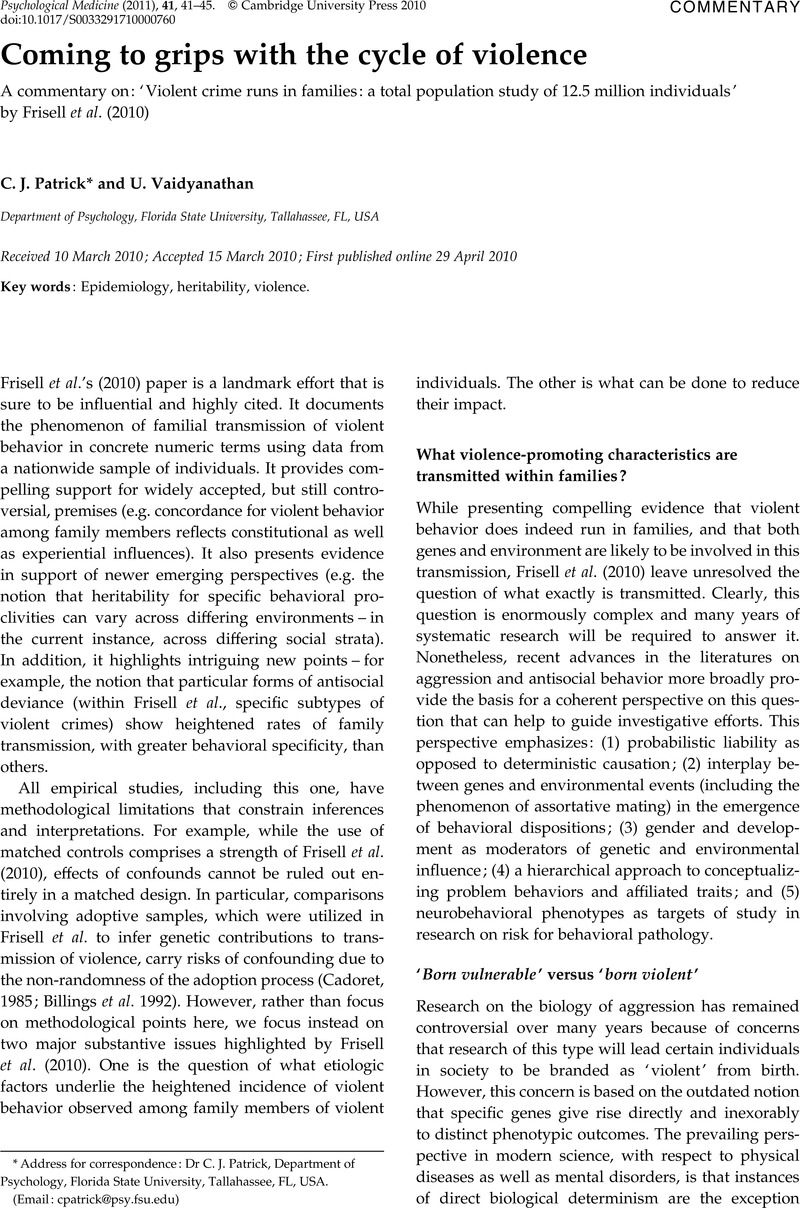Crossref Citations
This article has been cited by the following publications. This list is generated based on data provided by Crossref.
Bertoldi, Bridget M.
Perkins, Emily R.
Tuvblad, Catherine
Oskarsson, Sofi
Kramer, Mark D.
Latzman, Robert D.
Baker, Laura A.
Raine, Adrian
and
Patrick, Christopher J.
2022.
Pursuing the developmental aims of the triarchic model of psychopathy: Creation and validation of triarchic scales for use in the USC: RFAB longitudinal twin project.
Development and Psychopathology,
Vol. 34,
Issue. 3,
p.
1088.





